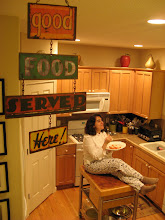
Is it wrong to gloat when you’ve managed to find a rare and desirable raw ingredient? Well, as soon as we were back in cell phone range from our mushroom hunt, I called my family in Texas to let them know that we had found four bagsful of chanterelles.

“I hate you,” was my mother’s reply. (In case you’re wondering, this isn’t the first time she’s become nasty over foodstuffs. At least she didn’t threaten to sever all contact this time.) And then she retaliated, “I’m poaching lobster.” Who knew that the conversation would end with me being just as jealous as they were? Serves me right.

Cream of Chanterelle Soup with Wild Rice
Printable Recipe
3 tablespoons extra virgin olive oil
1 yellow onion, diced
2 stalks celery, diced
2 carrots, diced
1 ¾ pounds chanterelles, torn into bite-size pieces
2 cloves garlic, minced
1 tablespoon tomato paste
2 tablespoons all-purpose flour
¼ cup white wine
1 bay leaf
1 sprig thyme
1 sprig Italian parsley
¼ cup heavy cream
¾ cup wild rice
Kosher salt
Freshly ground black pepper
Heat a large, heavy pot over medium heat until hot but not smoking. Add the oil and swirl to coat the bottom of the pot. Add the onion, celery, and carrots and sauté for 10 to 12 minutes, or until soft. Increase the heat to high, add the chanterelles, and sauté for another 10 to 12 minutes, or until soft. Add the garlic and tomato paste and sauté 1 to 2 minutes more, or until fragrant. Stir in the flour. Add the wine and simmer, stirring, for a minute or so. Add the bay leaf, thyme, parsley, cream, and 2 ½ quarts water. Bring to a boil and simmer, stirring occasionally, for about an hour, or until the flavors come together.
Meanwhile, place the wild rice into a medium pot and add enough water to cover by several inches. Add several large pinches of salt. Bring to a boil and simmer for about 45 minutes, or until tender. Drain.
Discard the bay leaf, thyme sprig, and parsley sprig from the soup, remove from the heat, and puree with an immersion blender until smooth. Stir in the wild rice and season to taste with salt and pepper. Ladle into bowls and serve immediately.
Serves 6 as a main course. This is a vegetarian soup. If you don’t have an immersion blender, you can use a regular blender but remember: never fill a blender more than half way with hot liquid. This means you will need to blend the soup in batches and reheat it before serving.


































